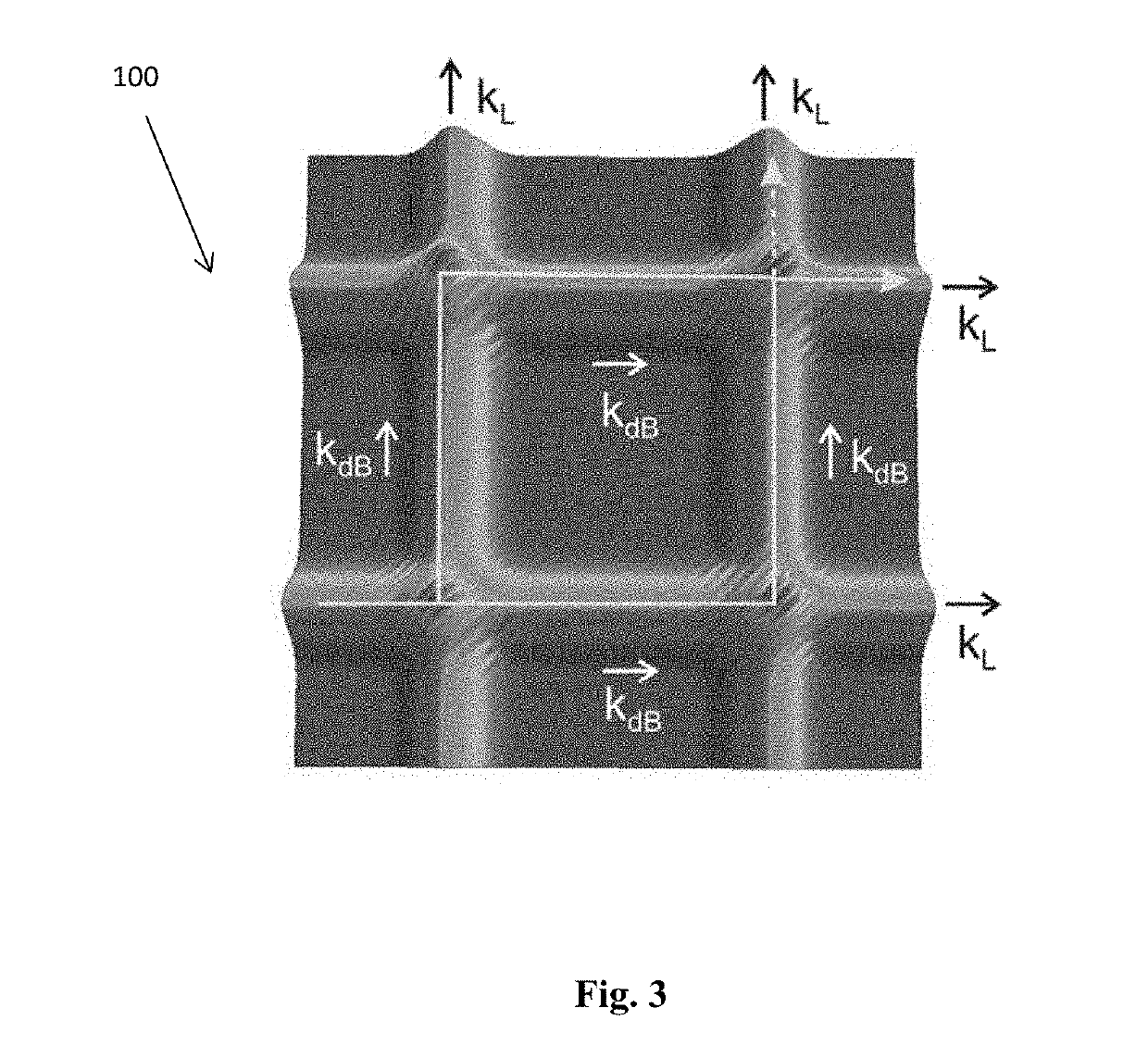Beam splitters
a beam splitter and beam technology, applied in the field of atomic physics and quantum physics, can solve the problems of limiting the coherence time of atoms in such types of magnetic traps, low power, high performance and low cost, and achieves superior performance, longer interrogation times, and small devices.
- Summary
- Abstract
- Description
- Claims
- Application Information
AI Technical Summary
Benefits of technology
Problems solved by technology
Method used
Image
Examples
Embodiment Construction
[0066]Referring firstly to FIG. 1, we are considering waveguides for matter waves, which are formed by focussed laser beams, both labelled kL in FIG. 1, the frequency of which is detuned sufficiently far above or below one of the internal atomic transitions of the matter waves so as not to induce such an atomic transition. Such a waveguide can be single-mode or multimode, which depends on the intensity and diameter of the laser beam.
[0067]Consider two such identical waveguides, labelled 11 and 12 in FIG. 1, which intersect each other at an angle of 2α in a region labelled 13. The interference of the laser beams in the region 13 of their intersection produces a standing light wave, the angle of which with respect to the waveguides is exactly equal to ±α and its period is equal to d=π / k / sin α, where k=2π / λ is the wave vector of the laser field. The amplitude of the standing wave depends on a degree of interference between the crossed laser beams and can be accurately tuned by their mu...
PUM
 Login to View More
Login to View More Abstract
Description
Claims
Application Information
 Login to View More
Login to View More - R&D
- Intellectual Property
- Life Sciences
- Materials
- Tech Scout
- Unparalleled Data Quality
- Higher Quality Content
- 60% Fewer Hallucinations
Browse by: Latest US Patents, China's latest patents, Technical Efficacy Thesaurus, Application Domain, Technology Topic, Popular Technical Reports.
© 2025 PatSnap. All rights reserved.Legal|Privacy policy|Modern Slavery Act Transparency Statement|Sitemap|About US| Contact US: help@patsnap.com



